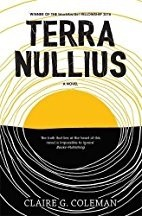Kintsugi is the Japanese art of repairing broken pottery with lacquer and gold. The idea is that the whole history of the pot is valuable. The gold (or silver or platinum) draws attention to the points of breakage. The places of healing are important, and the scars are to be celebrated, not to be hidden.
Jesus shares a vision of the church as a place where the work of reconciliation is ongoing. When there is a breakdown in relationships between believers, Jesus lays out a pathway to heal the fellowship. First, try to reconcile privately, then in a small circle of witnesses, then in the wider church. Only then might the church take the extraordinary step of expelling a member.
This is not a series of ‘reconciliation tasks’ to be ticked off as an excuse to get rid of a difficult member, rather the opposite. This is a picture of people taking time, over and over, to heal breakdowns in relationships, a church where the healing is valued. This is a community busy with creating and maintaining fellowship.
Scars show and they are valued.

A constant temptation of the church is to be nice, to substitute niceness for the emotional work of ongoing reconciliation. There is nothing wrong with niceness, as far as it goes, but being nice is not enough to keep believers together through conflict and misunderstanding.
There are ample opportunities to get offside with one another; whether it is a personal dislike, or whether it is a deep theological conviction. Our prayer and our goal should always be to undertake the emotional work of bridging those divides and of mending those broken friendships in Christ.
These months of enforced distancing because of Covid-19 when we have spent less time in the company of fellow Christians give us an opportunity to reflect on our church community and the way it deals with fractured relationships. It is a time when we can resolve to foster deeper fellowship in what we do as individuals in our parish or community.

Each time two or three come together in renewed fellowship, Jesus rejoices, ‘I am there with them!’ (Matthew 18:20).
The truth is that the church goes on being broken, over and over again, and God weeps for it. And so, the work of reconciliation goes on, over and over again. We are like a kintsugi pot in that we should value the places where we have been healed and put them on display. We are unlike kintsugi in that the church’s work of reconciliation is never finished this side of the Kingdom.


 Claire G. Coleman, Terra Nullius, Hachette Australia 2017
Claire G. Coleman, Terra Nullius, Hachette Australia 2017
